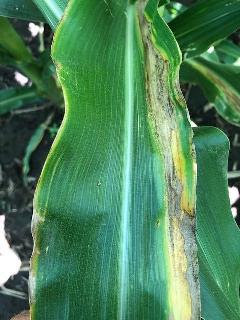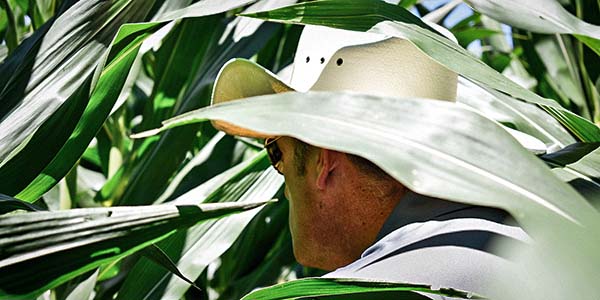AGRONOMICSUPPORT
YOU CAN TAKETO THE FIELD
Goss' Wilt In Corn
In the past few weeks, Goss’ Wilt bacterial disease has started to appear in South Dakota fields. While the disease is not currently widespread and is usually not a major issue, it is not hard to find Goss’s Wilt in fields year after year. Let’s talk through how to identify and manage Goss’s Wilt in corn.
How Goss' Wilt is Spread
Goss’ Wilt is a bacterial disease that infects corn through an opening or wound in the leaves. These wounds could be caused by hail, wind, insect pressure or another pest. When Goss’s Wilt bacteria are present, it is spread from plant to plant by the movement of water. Wet, warm weather favors the spread of the disease and temperatures around 80 degrees Fahrenheit are ideal. Yield losses can be significant when Goss’s Wilt is present, with a potential loss upwards of 30-50% if the infection is severe enough and depending on the growth stage the plant is at when disease sets in.
Goss' Wilt Phases
According to NDSU extension, the disease occurs in two phases: leaf blight and systemic wilt. As of today, I’ve only scouted it in the leaf blight phase. Below is an example of what it looks like in the field. Goss’s Wilt can be identified by the irregular, water-soaked tan lesions as well as a shiny bacterial ooze present on the surface of the leaf.
 The bacterium carries over year to year in the residue, so crop rotation is very important for managing the disease. Removing or burying residue through tillage can also aid in reducing infection risk. Because Goss’ Wilt is a bacterial disease, fungicide applications will not slow the spread or cure the disease, and the best management practice is hybrid selection. Planting a hybrid with a high tolerance for the disease reduces the risk and potential yield loss.
The bacterium carries over year to year in the residue, so crop rotation is very important for managing the disease. Removing or burying residue through tillage can also aid in reducing infection risk. Because Goss’ Wilt is a bacterial disease, fungicide applications will not slow the spread or cure the disease, and the best management practice is hybrid selection. Planting a hybrid with a high tolerance for the disease reduces the risk and potential yield loss.
Mix Matters
For helping determining the right hybrid mix to combat Goss’ Wilt, use the Mix Matters Tool or contact your local LG Seeds team.






Technical Team Agronomist